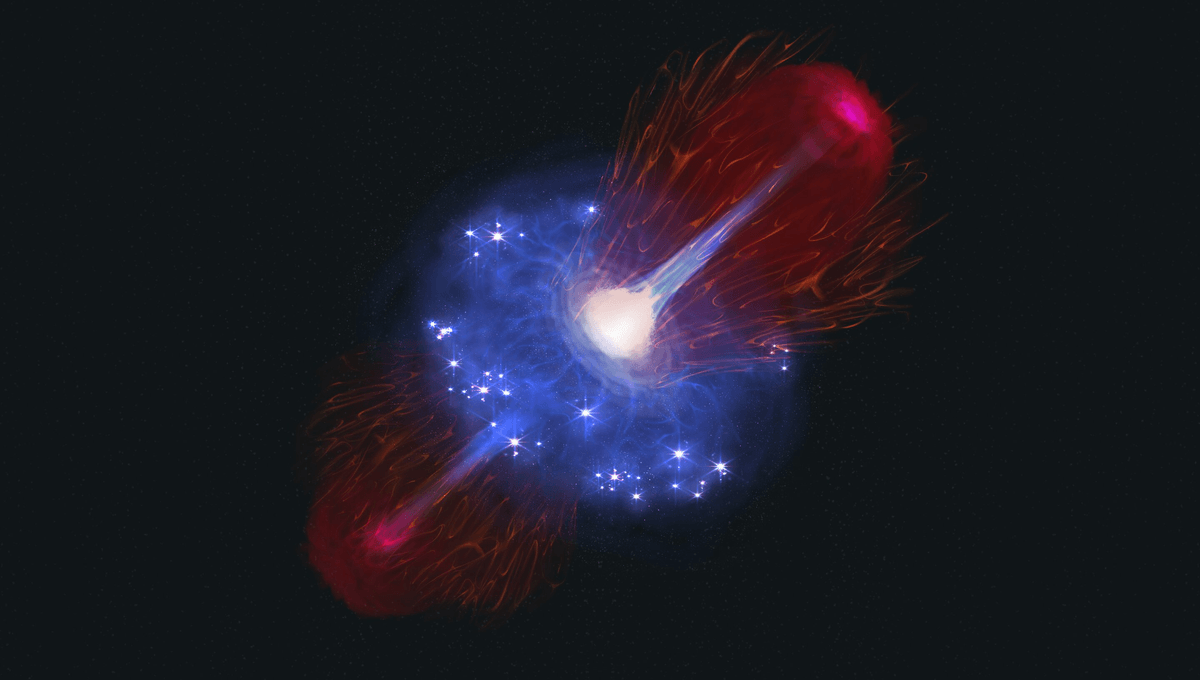
Galaxy JADES GN-1001830 has something of an oddity at its center: a supermassive black hole that makes up almost half of the mass of the whole galaxy. This object must have undergone an intense period of feeding and growth to reach the incredible mass of 400 million suns – however, now it is quietly napping. It has left astronomers to deal with a challenge. The black hole is simply too big for its galaxy.
At the current age of the universe – 13.8 billion years, if we are counting – there is a specific relation between the size of a supermassive black hole and its host galaxy. Most black holes are 0.1 percent of their host galaxies’ mass. But this one, from a time when the universe was only 800 million years old, makes up 40 percent of the mass of its galaxy.
The oddity is not just concerning the size, but also that it is quiet. The early universe was a period of intense growth for black holes. That is needed – you can’t get to 400 million suns’ mass if you are not eating. Still, its accretion rate is extremely low (100 times lower than the theoretical maximum). Basically, it is “asleep”.
“Even though this black hole is dormant, its enormous size made it possible for us to detect,” lead author Ignas Juodžbalis, from Cambridge’s Kavli Institute for Cosmology, said in a statement. “Its dormant state allowed us to learn about the mass of the host galaxy as well. The early universe managed to produce some absolute monsters, even in relatively tiny galaxies.”
The observations from JWST have been key to studying this object. The discovery might be of dramatic importance for our understanding of how black holes grow in the early universe. Maybe black holes are born big, from collapsing gas clouds. It is also possible that they grow to gargantuan sizes thanks to a brief period of activity.
The team suggests that the black hole feeds for 5 to 10 million years and then sleeps for 100 million years. If this is a standard behavior, then most supermassive black holes out there are in this dormant state. This makes it difficult to discover them, but continuous observations will reveal more of these objects.
“It sounds counterintuitive to explain a dormant black hole with periods of hyperactivity, but these short bursts allow it to grow quickly while spending most of its time napping,” added co-author Professor Roberto Maiolino, from the Kavli Institute and Cambridge’s Cavendish Laboratory. “It’s likely that the vast majority of black holes out there are in this dormant state – I’m surprised we found this one, but I’m excited to think that there are so many more we could find.”
The paper is published in the journal Nature.
Source Link: Enormous Black Hole From The Dawn Of Time Could Be In A Food Coma